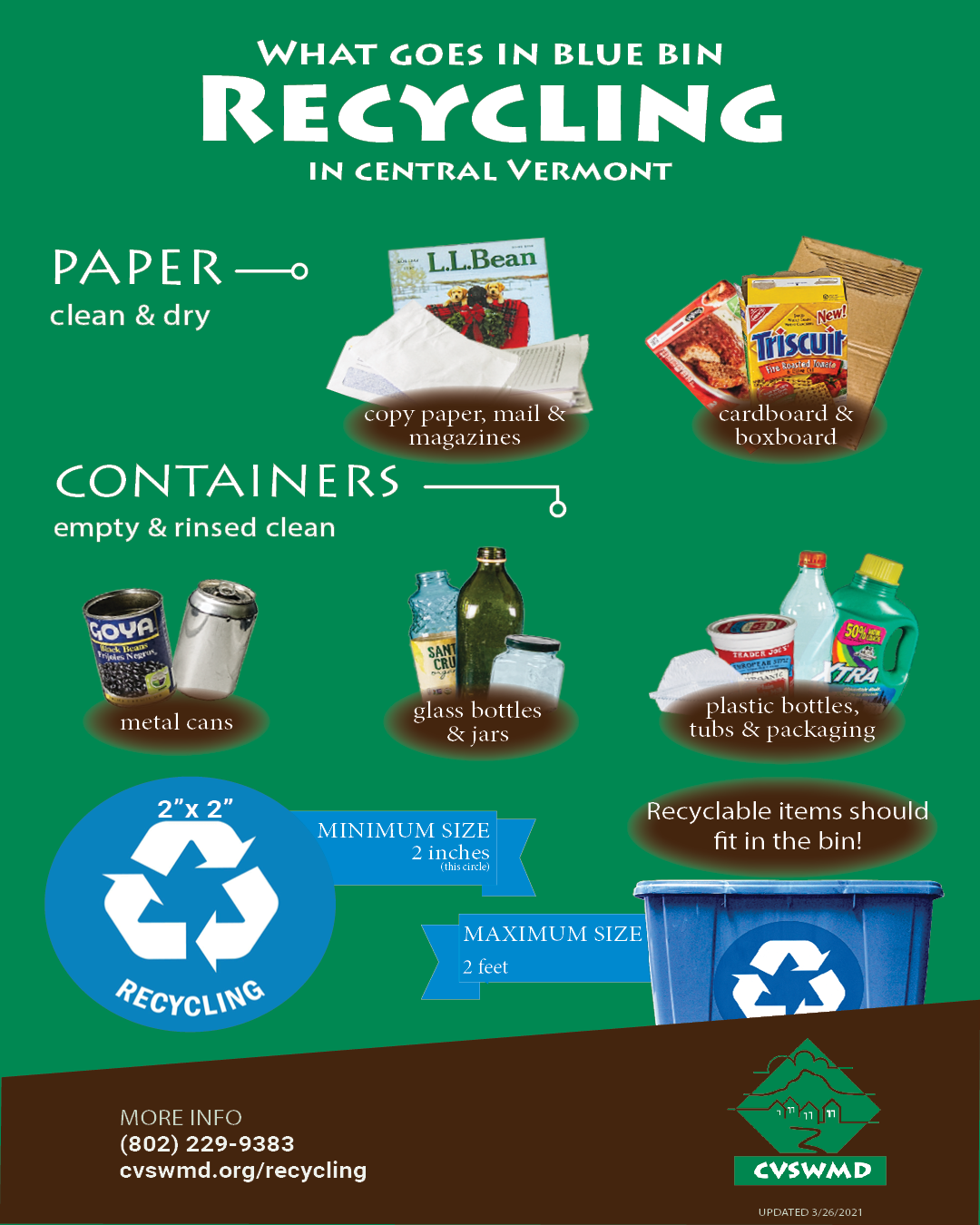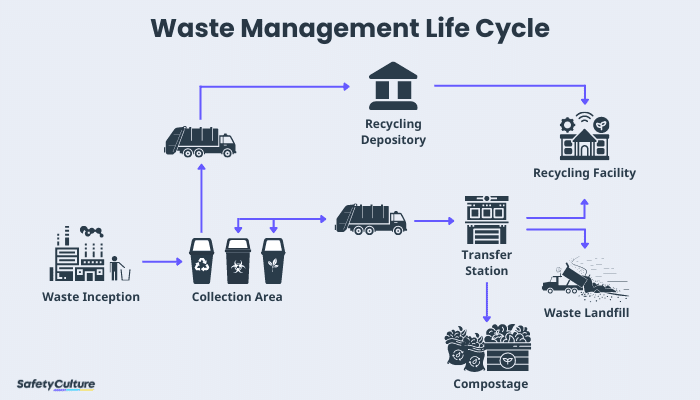Recycling Lives Services: Leading the Way in Accountable Recycling
Checking Out Various Types of Waste in Modern Waste Management Solution
The contemporary landscape of waste administration entails navigating an intricate selection of waste kinds, each needing specialized handling and disposal techniques to alleviate environmental influences. Municipal strong waste, dangerous waste, digital waste, and organic waste each present distinct obstacles and opportunities for source recovery.
Metropolitan Strong Waste
Municipal strong waste, usually referred to as house trash or trash, includes a range of thrown out materials produced by household, industrial, and institutional resources within a town. This waste stream typically consists of products such as product packaging, food scraps, lawn trimmings, paper, plastics, textiles, and discarded house products. The monitoring of local strong waste is a crucial part of metropolitan preparation and public health and wellness, necessitating effective collection, transportation, and disposal systems.
Reliable waste management systems are developed to reduce environmental influence while making the most of resource healing. This often entails a mix of methods consisting of recycling, composting, and landfilling. Reusing programs target products like paper, glass, steels, and specific plastics, diverting them from land fills and reintroducing them into the production cycle. Composting organic waste, such as food scraps and lawn trimmings, not only decreases garbage dump usage but also creates valuable soil changes.
Districts have to additionally address the economic and logistical challenges linked with waste monitoring. Applying pay-as-you-throw systems, boosting public recognition, and spending in innovation can substantially improve waste diversion rates. By integrating these practices, districts can promote lasting communities, minimize greenhouse gas discharges, and preserve natural deposits.
Contaminated Materials

Efficient contaminated materials administration includes several essential steps: identification, disposal, therapy, and segregation. Recognition entails the classification of waste based upon its dangerous residential properties. Partition guarantees that dangerous materials are stored independently from non-hazardous waste to protect against cross-contamination. Therapy approaches, such as chemical neutralization, incineration, and stabilization, are used to lower the poisoning, volume, or flexibility of the waste. Disposal alternatives, including safe and secure garbage dumps and below ground storage, are chosen to ensure lasting containment.
Governing structures, such as the Resource Conservation and Recovery Act (RCRA) in the United States, provide guidelines and standards for contaminated materials management. Adherence to these laws, paired with advancements in waste therapy modern technologies, is crucial in minimizing the dangers related to contaminated materials.
Digital Waste
Digital waste, generally referred to as e-waste, stands for a quickly growing obstacle in waste management systems worldwide. This kind of waste incorporates discarded digital gadgets and tools such as mobile phones, computers, televisions, and other electronic devices. The quick speed of technological development, combined with decreasing item life-spans and customer demand for the most recent tools, has greatly raised the volume of e-waste produced annually.
E-waste is particularly troublesome as a result of its complex make-up, typically including harmful substances like lead, mercury, and cadmium, which present significant ecological and health and wellness risks otherwise effectively managed. On the other hand, e-waste also has useful materials such as silver, copper, and gold, which can be recovered and recycled. The dual nature of e-waste-- both harmful and beneficial-- necessitates customized handling, reusing, and disposal processes.
Reliable e-waste management involves strict regulatory frameworks, robust collection systems, and advanced reusing modern technologies. Public recognition and engagement are vital, as incorrect disposal methods, such as illegal unloading and informal recycling, aggravate environmental contamination and wellness risks. As a result, boosting e-waste management methods is important for alleviating ecological impact and recuperating useful sources in an increasingly electronic world.

Organic Waste
Organic waste, making up kitchen area blog here scraps, backyard trimmings, and agricultural residues, stands for a considerable section of the worldwide waste stream. This kind of waste is biodegradable, implying it can be damaged down by bacteria into less complex natural compounds. In spite of its possibility for natural disintegration, incorrect administration of organic waste can result in negative ecological effects, including the exhaust of greenhouse gases such as methane, which add to environment change.
Reliable management of natural waste is critical for minimizing these ecological impacts (recycling lives services). Composting is an extensively taken on method, changing organic waste into nutrient-rich garden compost that can boost dirt health and wellness and agricultural productivity. Additionally, anaerobic digestion is an arising technology that transforms natural waste right into biogas, a renewable resource resource, and digestate, which can be made use of as plant food
Municipalities and waste monitoring entities need to execute durable organic waste collection and treatment programs to optimize the advantages of these processes. Public education and learning campaigns can likewise play a pivotal function in motivating houses and services to different organic waste from various other sorts of waste. By prioritizing the monitoring of natural waste, societies can decrease land fill use, lower greenhouse gas emissions, and produce beneficial results for agricultural use.

Ingenious Waste Monitoring
In the world of waste management, innovative approaches are changing how cultures manage their refuse, intending for sustainability and effectiveness. One popular development is the implementation of wise waste bins geared up with sensors that keep an eye on fill levels and maximize collection courses.
One more notable growth is the adoption of waste-to-energy (WtE) modern technologies. By transforming non-recyclable waste into usable energy through processes such as incineration and anaerobic food digestion, WtE minimizes land fill worry and gives a renewable resource resource. Additionally, advancements in chemical reusing enable the breakdown of complex plastics right into their initial monomers, allowing the development of new, my response top quality plastic items.
Moreover, the circular look these up economic situation design is getting traction, emphasizing the style of products and systems that focus on reusability and source effectiveness. This holistic strategy encourages industries to lessen waste generation from the start. Via these innovative methods, contemporary waste administration systems are not just attending to the instant obstacles of waste disposal but likewise leading the way for an extra sustainable future.
Final Thought
A comprehensive understanding of metropolitan solid waste, unsafe waste, digital waste, and natural waste, coupled with the execution of cutting-edge waste monitoring solutions, is essential for minimizing ecological impacts. Integrating innovations such as clever waste bins and waste-to-energy systems can improve effectiveness and sustainability. Efficient waste management strategies not just foster source healing yet additionally promote public awareness and engagement, inevitably adding to the development of a circular economic climate.
The modern landscape of waste administration includes browsing a complicated selection of waste kinds, each needing specialized handling and disposal methods to reduce environmental impacts. Municipal strong waste, harmful waste, electronic waste, and natural waste each present unique difficulties and possibilities for source recuperation.Digital waste, typically referred to as e-waste, stands for a swiftly expanding obstacle in waste management systems internationally. Via these ingenious approaches, modern-day waste administration systems are not just attending to the immediate challenges of waste disposal yet additionally paving the means for a more lasting future.
An extensive understanding of metropolitan solid waste, harmful waste, digital waste, and organic waste, combined with the implementation of cutting-edge waste administration options, is important for minimizing environmental impacts. (recycling lives services)